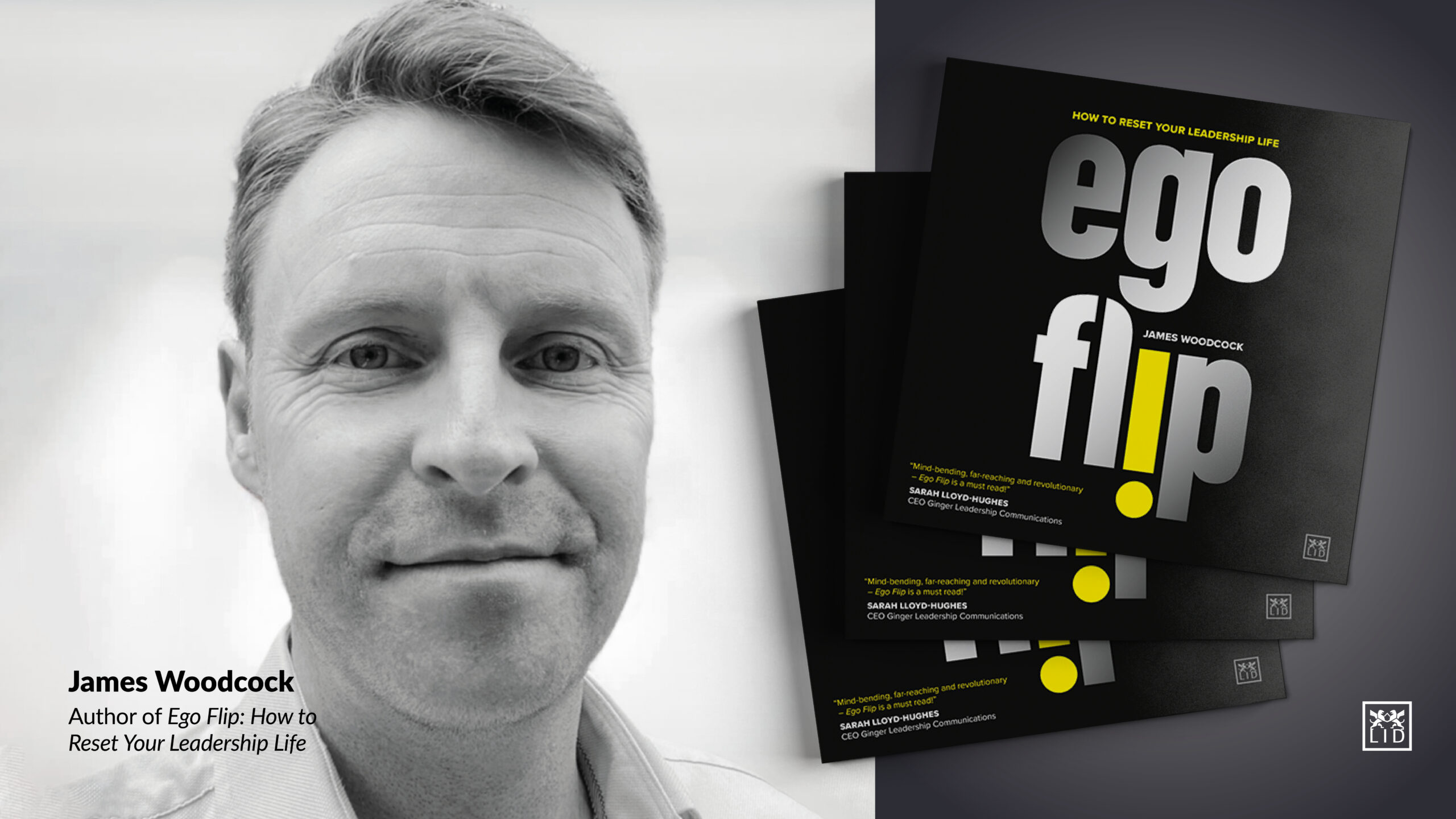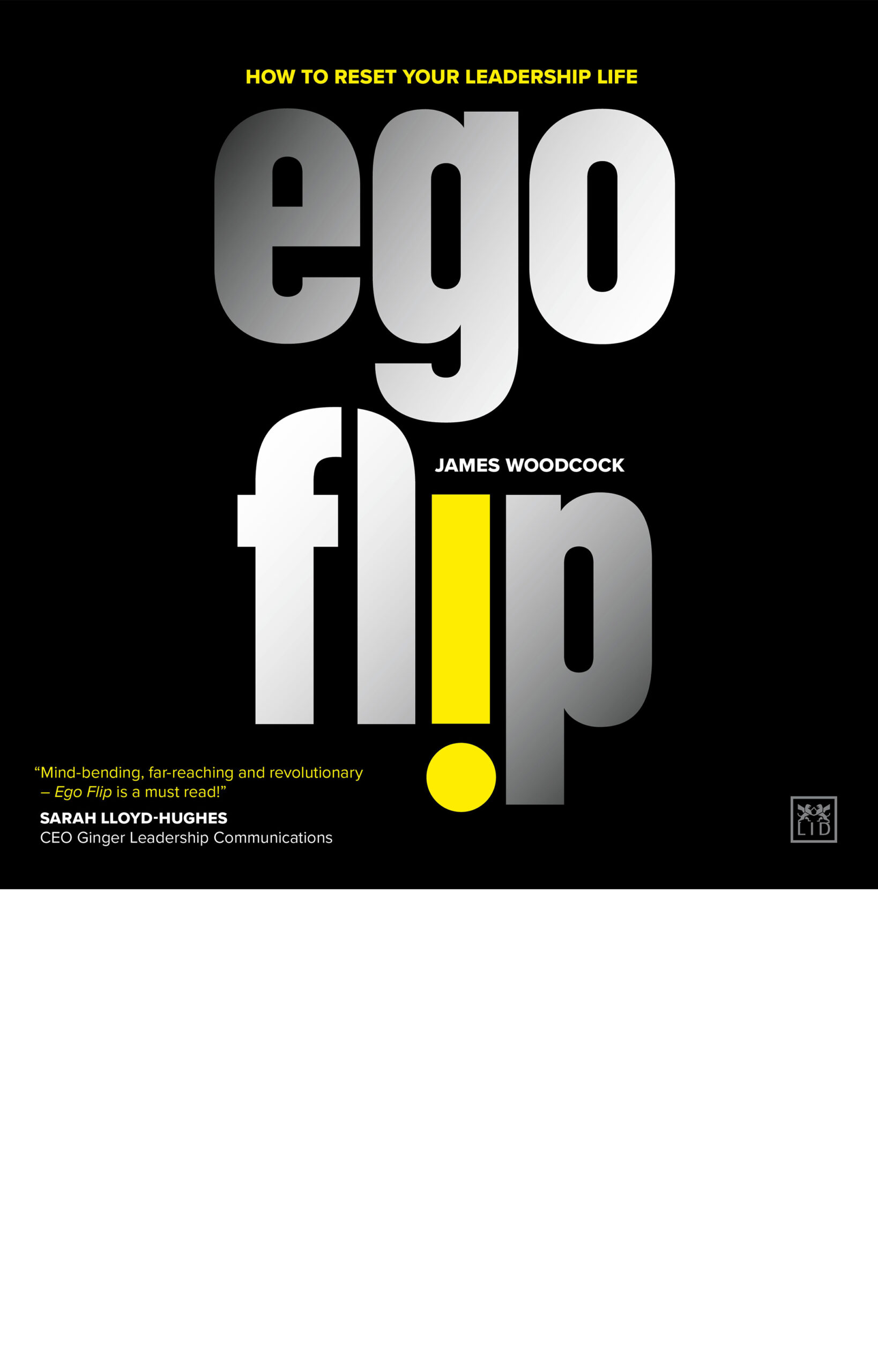|
Become a FRAgile Organization with James Woodcock
Become a FRAgile Organization

By Guest Contributor James Woodcock
Author of Ego Flip, James Woodcock, tells how Fully-Realized-Agile or FRAgile organizations succeed not because they are agile, but because of the value of the ideas on which they act.
Once upon a time, there was a town called Rubbertown. In the town there lived rubber people, who lived in little rubber houses. They ate from rubber bowls, slept in rubber beds and dreamed rubber dreams. At the centre of the town stood a factory that made the finest rubber balloons. Every morning, the men and women of Rubbertown would come down to the factory in their rubber hats, rubber coats and big rubber boots. Outside, the children watched and waited.
One by one, the workers would blow and blow, until there appeared above them a procession of beautiful balloons. Dazzling golds, iridescent reds, brilliant greens – each one more radiant than the last, like a rainbow reaching out across the sky, to the children at the gates who cried aloud: “They are so beautiful!”
Every day the workers would come. They would puff out their cheeks and blow and blow as they whispered their stories, of life, and of death. Of orange balloons that glowed with the warm promise of a rising sun. Silver balloons that glimmered with the cold steel of a hunter’s knife. Red balloons that blazed with the fury of a dying flame. News of the balloons travelled far, their stories spread, and children came from all around to see the balloons that danced on their strings. The children would call out to the men and women in their factory, “We need more balloons, they are so beautiful!”
Then one morning, from the factory window, the workers saw a trail of children that wound down the road, out of Rubbertown, and out of sight. “We’ve not got enough balloons for all of them!’ cried a man. “What are we going to do?” “Let’s use the chairs” another replied. “We hardly have time to sit down.” So, with that, they took up the rubber chairs, and they puffed out their cheeks and blew and blew, and a hundred shining balloons lifted into the sky, as a hundred hands of gleeful children reached out to catch them.
Still the children came, and soon the chairs had gone. “Let’s use the doors!” cried one. “We hardly have time to go anywhere.” “Let’s use the factory clock,” cried another. “We hardly have time at all.” The workers took down the doors, and they took down the clock, and they blew and they blew. And out from the factory arose balloon after balloon after balloon – a thousand balloons, each more beautiful than the last.
And yet still the children came. So, they took down the rubber roof, and they took up the rubber floor. They took away all that was left within and without, as the wind came whistling through the empty windows and empty walls carrying the children’s cry: “Give us our balloons, they are SO beautiful!” And soon the factory was gone, and only the workers remained. “We’ve no more rubber left!” they cried. “Whatever shall we do?” So, they pulled off their rubber hats, and their coats, and their great big rubber boots. The workers grew thinner and thinner, grasping for all that they could find. They blew and they blew, until all that was left was a whisper. The sky was filled with balloons of every colour – more than could be counted for the stars in the sky. And the children’s hearts were full to bursting, as one by one, the workers of Rubbertown disappeared, forever.
The story of Rubbertown asks a fundamental question of all organizations: How far should they go in service of the customer? All organizations must stretch themselves to deliver the best value to their customers, but by how much? Organizations are on a journey to increase value to their customers. Agile organizations that organize around value streams (in effect, mini-organizations aligned around the delivery of a specific measure of customer value) are growing an ever more competitive advantage as a result. Fully-Realized-Agile is a concept that takes the core tenets of agile one step further, through three beliefs that pertain to the fundamental purpose of the organization:
- The organization exists to serve its customers. Its success is measured by the value the customer receives from the organization, relative to that which they could receive elsewhere.
- If the value that is delivered is not improving and/or is less than an acceptable threshold, then the organization is no longer acting in the best interests of that customer and should withdraw its services.
- The acceptable threshold of customer value should be far higher than most organizations (and most customers) set today.
Fully-Realized-Agile or FRAgile, is a holonic approach that recognizes that the optimization of value generation to the customer requires action not just through the organization, but through a system of agile organizations (the competitive marketplace). To that end, FRAgile organizations need to establish two fundamental operational conditions in order to fully realize their agile capability:
- Non-dual operating system: Agile organizations run a dual operating system, in which value streams run alongside functional silos to ‘keep the lights on.’ These functional silos lock value away. Consider, for example, the huge investment in marketing and advertising that brings no direct benefit to the customer, and does little to illuminate any potential differences between brands that might inform better customer choice. Functional silos are established through standards and processes that through their conformity are resistant to change, because they do not conform or standardize around a specific customer value need. Dual operating systems are necessary only as part of the transformation of organizations toward the wholesale establishment of value streams. As more value streams are established, the role of functional silos should diminish, with the ultimate ambition of a non-dual operating system end-state. This end-state is more a collection of independent autonomous enterprises that share a common purpose, in the same way as the tentacles of an octopus share a common mind. If a value stream is unable to serve the customer to the minimum value threshold, and if it proves unable to improve, it is dropped, and value reinvested elsewhere. Like the octopus, who remains agile even when they lose a tentacle, in the knowledge that in time they can grow a new (if not different one) back. The same principle applies for smaller, more specialist organizations – those that comprise only one value stream in service of a singular customer need. The difference is that to grow back, the organization would need to reform as a start-up. A FRAgile organization system encourages the formation of start-ups and increasingly specialized services on this basis.
- Reciprocal system of FRAgile enterprises: In the absence of a monopoly, the one choice that every organization offers to its customers, knowingly or not, is the choice to change supplier. Value is always relative to that which is available in the marketplace. Unfortunately, customers are generally uninformed as to the relative value they are receiving compared with other organizations – a fact compounded by how resistant most organizations are to educating them. As a result, customers stay loyal out of ignorance, tolerating what should be considered unacceptable levels of value. This ignorance is then reciprocated, when the organizations themselves assesses value relative to that which customers have learned to tolerate within their organization, and behave accordingly, rather than through a singular reference to relative market value. In contrast, FRAgile organizations help their customers understand the true value that they provide relative to the market, and actively facilitate a more informed customer choice. Customer mobility is essential to ensuring that the system of enterprises can provide the customer with best value at all times.
FRAgile organizations are more likely to fail, either in part or entirely, because they adhere to a higher customer value threshold, from both the enhanced perspective of the customer (who is more informed and has greater choice) and of the organization (which displays greater customer-centricity). This means that customers therefore need to be able to move to different suppliers quickly and insightfully, and FRAgile organizations need to work more closely together, with greater transparency as to what each can offer. The FRAgile organization system is therefore designed to be simultaneously more competitive and more collaborative. It is reflected in more mature decisions around service differentiation. For example, does it really help the customer to be offering exactly the same service in two different places? Would a FRAgile organization be able to compete in this environment? It also extends to facilitating greater mobility in the talent marketplace, so that as one value stream fails (be it part or all of an enterprise) talent can move quickly to a new organization to continue to serve customers.
FRAgile organizations succeed not because they are agile, but because of the value of the ideas on which they act. Handy’s Sigmoid Curve1 refers to the need for fragility in organizations as the necessity to break what seems to be working, to perpetuate organizational growth. In the face of accelerating external change, the breaking point will increasingly reduce until the old adage, “If it ain’t broke, don’t fix it,” might be better replaced with, “If the organization is fixed, it is broken.”
References:
- Handy, C. (1995). The Empty Raincoat: Making sense of the future. London: Arrow Books, pp. 50–57.
ABOUT THE AUTHOR
Suggested Reading
 This important book explores the paradox of self-reference that lies at the heart of leadership –ie, the story of ego. It examines the assumptions that have shaped the conventional view of leadership and offers a radical new paradigm and way to lead. The author explores the important role that ego plays within individual leaders. It looks at how ego has emerged as a new “meta ego”–the coordinated, collective expression of E.G.O or Evil Genius Organization–that is polarizing our world today. And through a new leadership manifesto (a set of 8 conscious imperatives that offer a new vision for transcending the ego), the author provides a pathway for leaders to rethink today’s conventions and what great leadership really means.
This important book explores the paradox of self-reference that lies at the heart of leadership –ie, the story of ego. It examines the assumptions that have shaped the conventional view of leadership and offers a radical new paradigm and way to lead. The author explores the important role that ego plays within individual leaders. It looks at how ego has emerged as a new “meta ego”–the coordinated, collective expression of E.G.O or Evil Genius Organization–that is polarizing our world today. And through a new leadership manifesto (a set of 8 conscious imperatives that offer a new vision for transcending the ego), the author provides a pathway for leaders to rethink today’s conventions and what great leadership really means.

